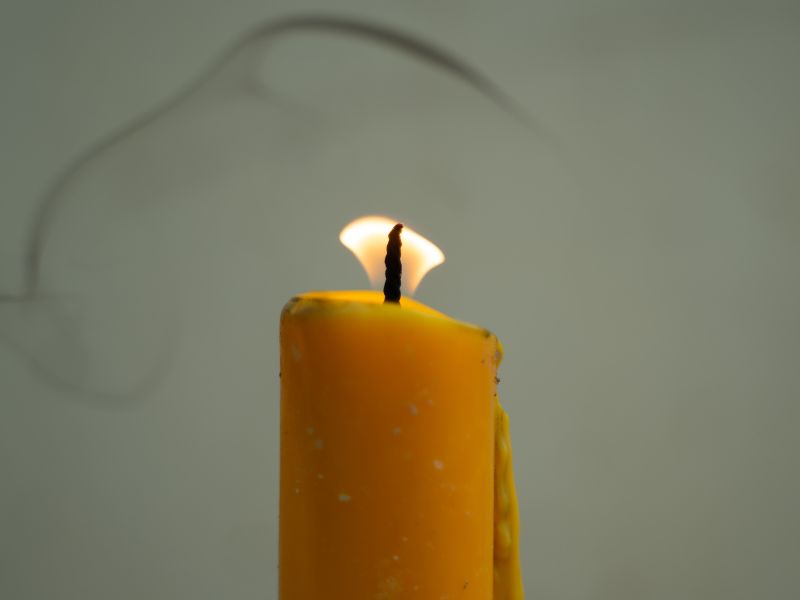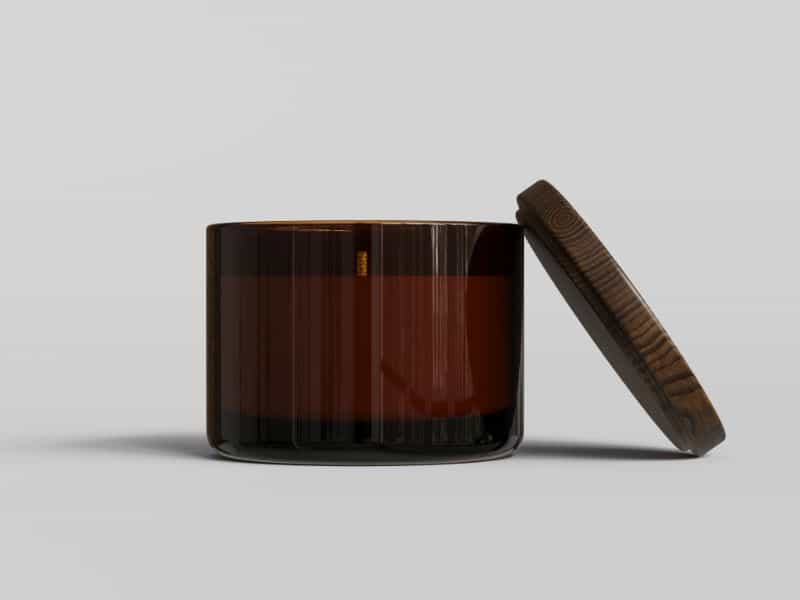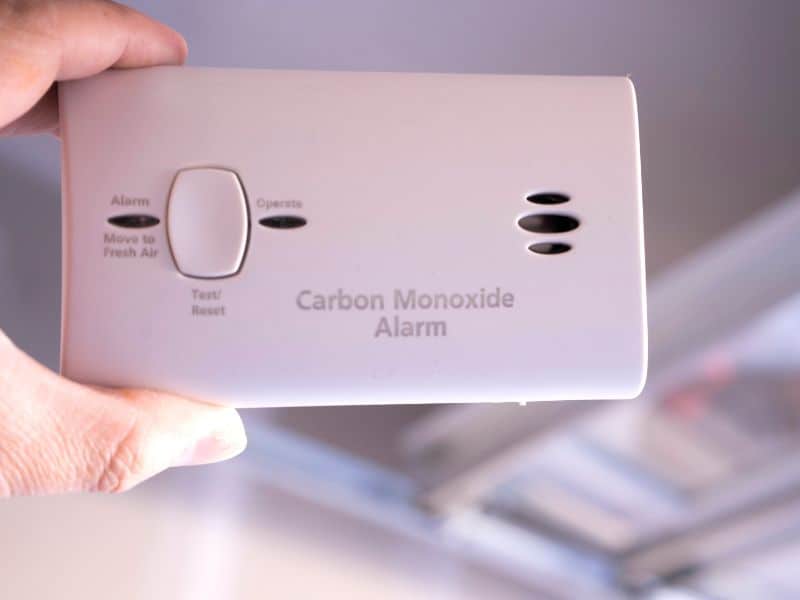Candles can bring an aura of serenity and calm to any environment. The soft, flickering light is both beautiful and relaxing. However, as a candle lover, you’ve likely noticed a dark, powdery residue that can accumulate on your candles or nearby surfaces, especially after prolonged burning. This is candle soot. In this guide, we will delve deep into the world of candle soot, understanding its causes, impacts, and more importantly, how to avoid or eliminate it.
What is Candle Soot?
Candle soot is a natural byproduct of the combustion process. When you light a candle, the heat of the flame melts the wax near the wick. This liquid wax is drawn up into the wick, where the heat of the flame vaporizes the liquid wax, turning it into a hot gas.
The heat of the flame then causes the molecules in the gas to break apart. In the presence of oxygen, the carbon atoms in these molecules can recombine to form carbon dioxide and water vapor, the primary byproducts of clean combustion.
However, if the flame does not have enough oxygen or is not hot enough to completely break down the wax molecules, the carbon atoms can recombine to form other molecules, including soot.
Soot is made up of tiny carbon particles that have not burned completely. These particles can cluster together to form larger particles, which you see as a black, powdery substance. While soot is a common byproduct of burning any carbon-based fuel, it can be more noticeable with candles due to their prolonged burning time and the fact that they are often burned in enclosed spaces.
While soot is not harmful in small amounts, it can become a problem if it accumulates on your walls, ceilings, or other surfaces. It can also affect the air quality in your home and can cause or aggravate respiratory problems if inhaled in large amounts.
What Causes Candle Soot?
Candle soot is primarily caused by incomplete combustion. This can occur for a variety of reasons, but there are three main factors: the candle’s wick, the type of wax used, and the burning conditions.
1. Wick Size and Type
The wick is the heart of the candle. Its job is to absorb the melted wax and transport it to the flame, where it is vaporized and burned. If the wick is too large, it will draw up too much wax, causing the flame to burn too hot and produce more soot.
On the other hand, if the wick is too small, it will not draw up enough wax, causing the flame to sputter and produce soot. The type of wick can also affect the amount of soot produced. For example, wicks made from natural fibers like cotton tend to produce less soot than those made from synthetic fibers.
2. Type of Wax
The type of wax used in the candle can also affect the amount of soot produced. Some types of wax, like paraffin, contain higher amounts of carbon and other impurities that can contribute to soot production. On the other hand, waxes like soy or beeswax are more pure and tend to produce less soot.
3. Burning Conditions
The conditions under which you burn your candle can also contribute to soot production. For example, burning a candle in a drafty area can cause the flame to flicker, leading to incomplete combustion and soot production. Similarly, if the candle is not trimmed properly before each use, the excess length can cause the flame to burn too hot, leading to more soot.
The Impact of Candle Soot
Candle soot can have several impacts, both aesthetic and health-related. As mentioned earlier, one of the most common issues is the unsightly black residue it leaves on walls, ceilings, or other surfaces. This can be particularly problematic if you frequently burn candles in the same location, as the soot can accumulate over time and become difficult to remove.
Beyond the aesthetic, candle soot can also affect the air quality in your home. The tiny particles of carbon in the soot can become airborne and, if inhaled, can cause or aggravate respiratory problems.
This is particularly a concern for people with asthma or other respiratory conditions, as well as the elderly and young children. Furthermore, some research suggests that the particulate matter in candle soot may contain a number of toxic substances, including lead and benzene, particularly if the candles are made from certain types of wax or have metal-cored wicks.
The heat from a sooty candle flame can also cause damage. If the soot particles in the flame become hot enough, they can ignite, causing a secondary flame or “sooting flare.” When a candle is sooting, this secondary flame can be much hotter than the primary candle flame and can potentially cause a fire if it comes into contact with a flammable surface.
Candle sooting flares are rare but worth knowing about so that you can properly locate the candle for safe operation.
Preventing Candle Soot
The good news is that there are several steps you can take to prevent or reduce the amount of soot produced by your candles.
1. Choose the Right Wick
As mentioned earlier, the size and type of wick can have a significant impact on the amount of soot a candle produces. When choosing a candle, look for one with a wick that is the right size for its diameter. A properly-sized wick will produce a flame that is about one inch in height and will consume the wax at a rate that prevents the formation of a deep, soot-producing “tunnel” in the candle.
In terms of the type of wick, cotton or paper wicks are often the best choices. These natural fibers burn cleanly and produce less soot than synthetic fibers. Additionally, avoid candles with metal-cored wicks, as these can release potentially harmful substances when burned.
2. Burn Your Candle Properly
How you burn your candle can also affect the amount of soot it produces. One of the most important things you can do is to keep the wick trimmed to about a quarter inch in length. A longer wick will produce a larger, sootier flame, while a shorter wick will produce a smaller, cleaner flame. Also, try to avoid burning your candle in a drafty area, as this can cause the flame to flicker and produce more soot.
3. Choose a High-Quality Candle Wax
Finally, the type of wax used in the candle can also affect soot production. Paraffin wax, which is derived from petroleum, can produce more soot than other types of wax due to its higher carbon content. Soy wax and beeswax are generally cleaner-burning options.
Removing Candle Soot
If you’re dealing with an accumulation of candle soot in your home, there are several methods you can use to clean it up.
Cleaning Candle Soot from Walls and Ceilings
For soot on walls and ceilings, start by vacuuming the area with a soft brush attachment to remove any loose soot. Then, use a soot sponge (a special type of sponge made from rubber) to gently wipe off the remaining soot. If some soot still remains, you can use a mild detergent or a soot-removing cleaner, but be sure to test it on a small, inconspicuous area first to make sure it doesn’t damage the paint or wallpaper. After cleaning, rinse the area with clean water and dry it thoroughly.
Cleaning Other Surfaces
For soot on other surfaces, such as furniture or countertops, a vacuum and a soot sponge may also be effective. For tougher soot stains, try using a mixture of warm water and a mild soap or detergent. If the soot has gotten into fabric, such as a tablecloth or carpet, you may need to use a laundry detergent or a professional cleaning service.
Cleaning the Air
To clean the air in your home after burning a sooty candle, consider using an air purifier with a HEPA filter, which can remove the tiny particles of soot from the air. You might also consider opening windows to ventilate the room.
Understanding Candle Labels
Now that we understand the various factors that can influence soot production, let’s take a look at how to interpret candle labels to make better choices.
Wax Type
The type of wax used in a candle should be clearly stated on the label. Look for candles made from soy wax or beeswax, which are cleaner-burning options than paraffin wax.
Wick Material
The wick material may also be listed on the candle label. Cotton or paper wicks are typically the cleanest burning. Try to avoid candles with metal-cored wicks, as these can release potentially harmful substances when burned.
Candle Size
The size of the candle can also affect soot production, so it’s something to consider. A larger diameter candle may produce more soot if the wick is not properly sized for the candle’s diameter.
Tips For Soot-Free Candle Burning
- Choose Quality Candles: Not all candles are made equal. High-quality candles typically produce less soot than their cheaper counterparts. Look for candles made from natural materials like soy or beeswax, which are known for their cleaner burn.
- Trim the Wick: Before each burn, trim your candle’s wick to about 1/4 inch. Longer wicks can lead to a larger flame, faster burn, and consequently, more soot. A trimmed wick helps ensure a smaller, controlled flame for a cleaner burn.
- Avoid Drafts: Burning candles in a drafty area can cause the flame to flicker, which leads to incomplete combustion and, in turn, more soot. Ensure your candle is placed in a wind-free area for a steadier flame and less soot.
- Use a Candle Topper: A candle topper, also known as an illumalid, can help to stabilize the flame, leading to a more complete burn and less soot. It works by creating a more enclosed burning environment, reducing the effects of drafts and promoting an even burn.
- Don’t Burn for Too Long: Burning a candle for an extended period can cause carbon deposits to build up on the wick, which may lead to more soot. As a general rule, try not to burn candles for more than 4 hours at a time.
- Choose Lighter Colors: Darker colored candles may produce more soot due to the added dyes that can interfere with combustion. If possible, opt for lighter colored or undyed candles for a cleaner burn.
- Use a Wick Dipper to Extinguish Your Candle: Blowing out a candle can produce smoke and soot. Instead, use a wick dipper to bend the wick into the wax, extinguishing the flame without any smoke.
When following these tips you can enjoy your favorite candles while minimizing soot production, creating a healthier and cleaner atmosphere in your home.
Proper Candle Burning Procedures
- Trim the Wick: Start every candle burning session by trimming the wick. Aim to leave the wick length at about 1/4 inch to ensure the flame doesn’t become too large and produce excessive soot. A proper wick length allows for an even and clean burn.
- Check Your Surroundings: Choose a safe location to burn your candle. It should be on a heat-resistant surface away from drafts, flammable objects, children, and pets. Anywhere wind or movement could interfere with the flame can result in soot production and, worse, a potential fire hazard.
- Lighting Your Candle: Use a long match or lighter to ignite your candle to avoid burning your fingers. Let the wax melt to the edge of the container to prevent tunneling—a condition where the wax doesn’t melt evenly, which can lead to an uneven burn and more soot production.
- Keep the Flame Steady: Once lit, make sure the flame remains steady. A dancing or flickering flame is a sign that it’s not burning properly, leading to incomplete combustion and resulting in more soot. If you notice the flame is flickering excessively, it could be due to a draft. If possible, move your candle to a less drafty location.
- Monitor Burn Time: It’s essential not to leave your candle burning for too long. The longer the burn, the higher the chance of soot being produced. As a general guideline, candles should not be burned for more than 4 hours at a time.
- Extinguishing the Candle: When it’s time to extinguish your candle, use a candle snuffer or a wick dipper to put out the flame. Blowing out the flame directly can cause smoke and soot.
- Cleaning Up After Burning: After extinguishing the candle, let it cool completely. Then, use a clean, dry cloth to wipe away any soot from the jar’s interior, if necessary. Regular cleaning helps to maintain the candle’s performance and reduces the potential for soot build-up during subsequent burns.
Remember, proper candle care doesn’t just improve the candle’s burn time and the quality of the light and fragrance—it’s also a critical safety practice. Following these procedures will ensure a clean, soot-free burn and a long-lasting, enjoyable candle.
Alternative Solutions for a Soot-Free Experience
Not a fan of soot? Here are some great alternatives for enjoying fragrances in your home without worrying about soot.
Electric Candle Warmers
Electric candle warmers are devices that warm up a candle to release its scent without the need for a flame. This means no combustion is taking place, and thus, no soot is produced. They come in a variety of styles to suit different decor tastes and can be used with any type of scented candle.
Diffusers
Diffusers, either reed or ultrasonic, offer a way to distribute fragrance into a room without burning anything. Reed diffusers use absorbent sticks placed in a bottle of fragrant oil, while ultrasonic diffusers use water and essential oils to create a scented mist.
Wax Melts
Wax melts are scented pieces of wax designed to be melted in a warmer, releasing their fragrance into the air. Like electric candle warmers, they provide a flameless and soot-free alternative to traditional candles.
Frequently Asked Questions
Candle soot is a black, powdery substance that forms due to incomplete combustion of candle wax. It occurs when the flame burns the candle’s fuel (wax and wick) but doesn’t fully consume it, causing tiny soot particles to be released into the air.
Excessive soot production can be due to several factors such as long wicks, high oil content, and improper burning conditions. Ensuring your wick is trimmed and the candle is burned in a draft-free area can significantly reduce soot production.
While occasional exposure to candle soot is unlikely to cause serious health problems, long-term or frequent exposure can potentially impact health. Soot particles can be inhaled deep into the lungs, leading to respiratory issues. Always ensure adequate ventilation when burning candles.
To minimize candle soot, always trim the wick to about 1/4 inch before each burn. Burn candles in a well-ventilated, draft-free area, and avoid candles with high oil content. Opt for candles made from natural waxes like soy or beeswax for cleaner burn.
Soy and beeswax candles are known for producing less soot compared to their paraffin counterparts. This is largely due to their natural composition and the way they burn, which is typically slower and cooler, resulting in more complete combustion and less soot.
Scented candles can produce more soot because the oils and chemicals added for fragrance can interfere with complete combustion. This, combined with a longer burn time often associated with scented candles, can result in an increased amount of soot.
Candle soot can contribute to indoor air pollution. Over time, if candles are frequently used, this could add to the overall air quality problem. This underlines the importance of choosing cleaner-burning candles and ensuring good ventilation when candles are lit.
A candle sooting flare occurs when a candle’s flame becomes unusually large and starts to produce excessive soot. This is typically due to improper wick length, overburning, or the presence of impurities in the wax, leading to incomplete combustion and soot release.
Conclusion
Candle soot can be a nuisance, but with the right knowledge and tools, it’s a problem that can be prevented, managed, and cleaned up. Whether you choose to stick with traditional candles and make better choices about the types of candles you use and how you burn them, or opt for soot-free alternatives, you have the power to control the level of soot in your home.
Remember, the enjoyment you derive from the flickering flame of a candle or the comforting scent filling your room need not be marred by the threat of soot. Understand what causes it, how to prevent it, and how to clean it up, and you’ll be well on your way to a better, brighter, and soot-free candle-burning experience.
And that, dear reader, is your comprehensive guide to all things candle soot. Here’s to clear air, clean surfaces, and the soothing glow of a well-burned candle.






